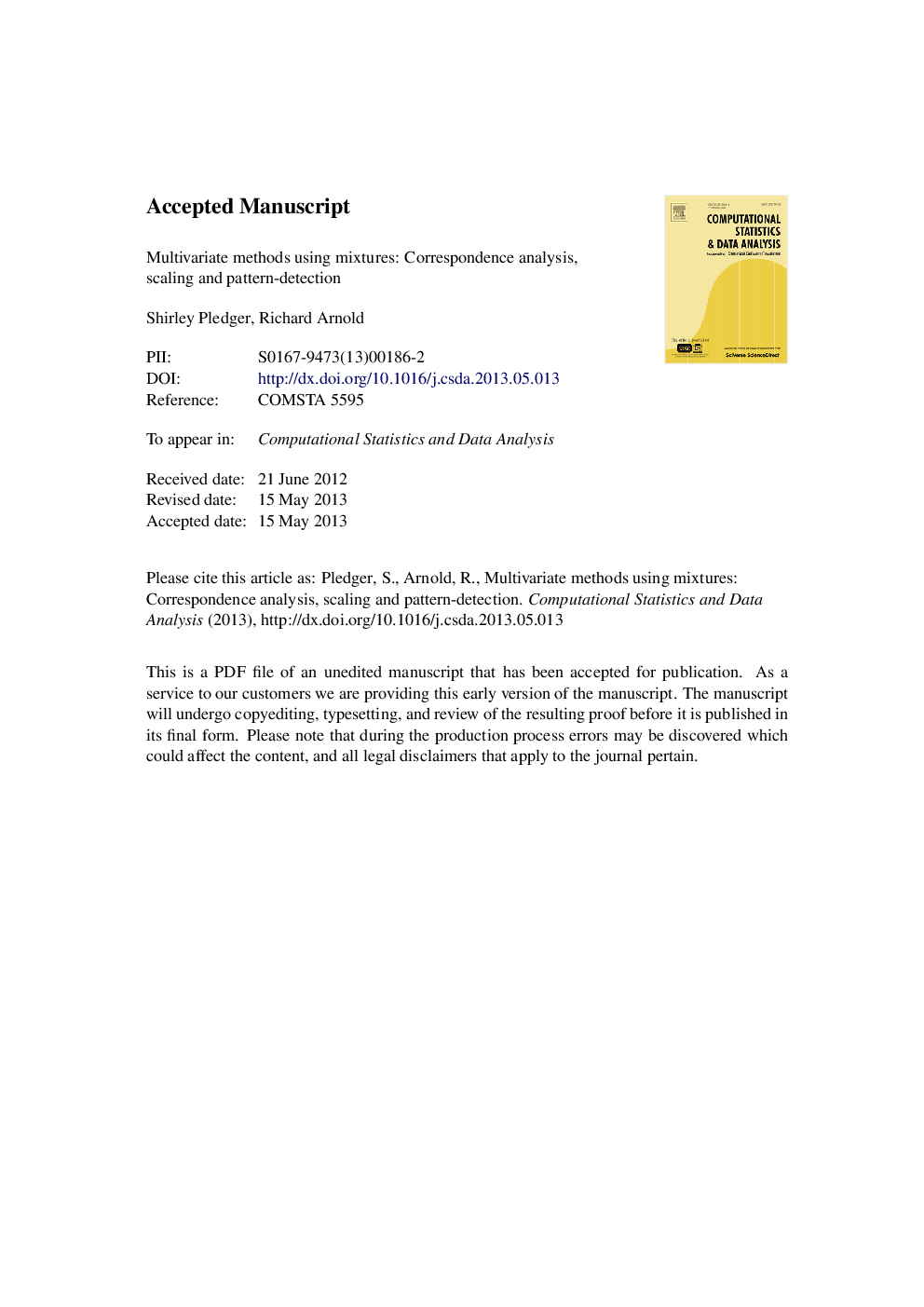| Article ID | Journal | Published Year | Pages | File Type |
|---|---|---|---|---|
| 6870354 | Computational Statistics & Data Analysis | 2014 | 43 Pages |
Abstract
Matrices of binary or count data are modelled under a unified statistical framework using finite mixtures to group the rows and/or columns. These likelihood-based one-mode and two-mode fuzzy clusterings provide maximum likelihood estimation of parameters and the options of using likelihood ratio tests or information criteria for model comparison. Geometric developments focused on pattern detection give likelihood-based analogues of various techniques in multivariate analysis, including multidimensional scaling, association analysis, ordination, correspondence analysis, and the construction of biplots. Illustrative examples demonstrate the effectiveness of these visualisations for identifying patterns of ecological significance (e.g. abrupt versus slow species turnover).
Keywords
Related Topics
Physical Sciences and Engineering
Computer Science
Computational Theory and Mathematics
Authors
Shirley Pledger, Richard Arnold,
